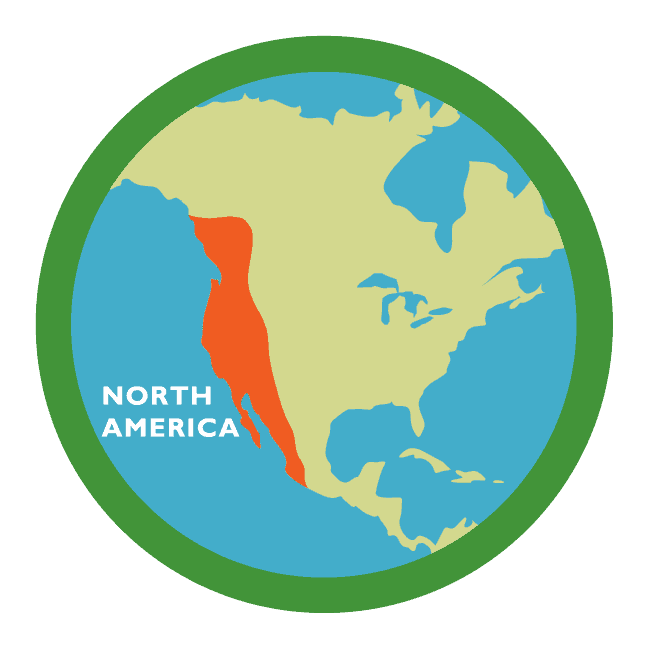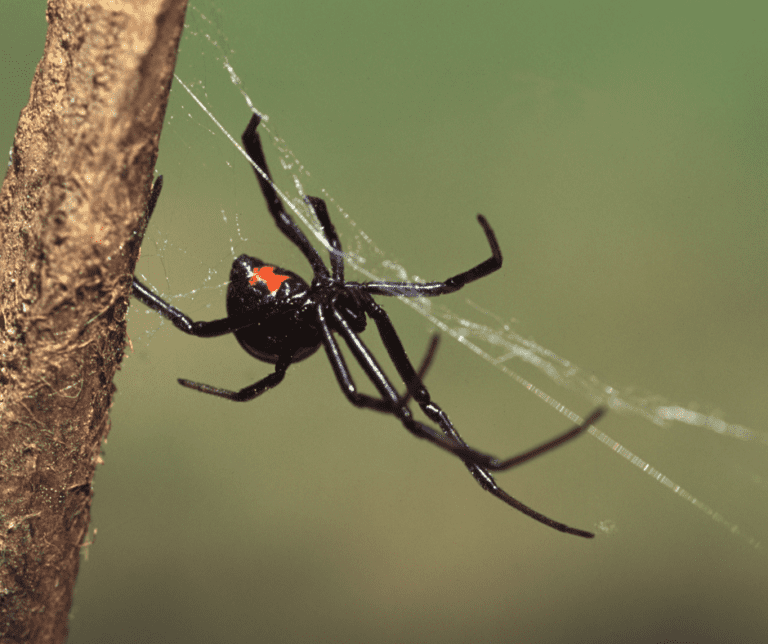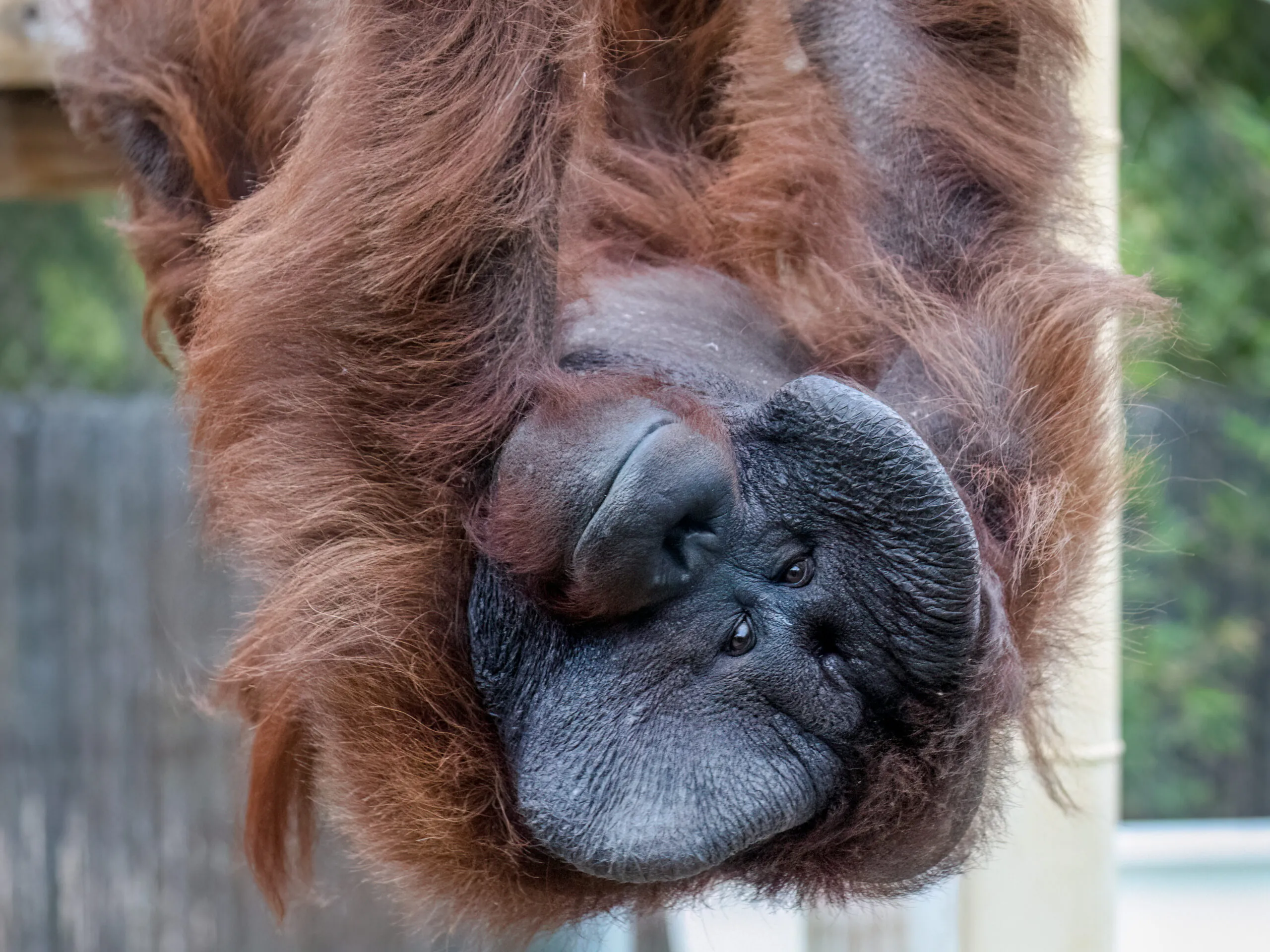Southwestern Widow Spider
Latrodectus hesperus
Venom
Female black widows are larger and more recognizable than males, thanks to their large black abdomens and the red, hourglass-shaped marks that warn of their powerful venom. The smaller and less boldly colored males are also venomous, but their fangs are too small to puncture human skin. These spiders are typically shy and reluctant to bite in defense, preferring to hide if possible. The venom can cause painful cramping and nausea, but most people have no lasting effects and deaths are exceedingly rare.
On the Web
Black widow webs appear messy and unstructured to the human eye. They are often built near homes where insects are abundant, increasing the chances of catching a meal. The silk that forms the web is very strong and produces a characteristic “ripping paper” sound if torn. When a male is ready to mate, he will use his front legs to “drum” on the edge of the web in a specific pattern. This is thought to communicate to the female that he is a male of the same species and not an insect trapped on the sticky silk!
Good Moms
Widow spiders get their name from the fact that females occasionally eat males after mating. While this is uncommon in the western black widows of Arizona, it is considered common in Australian redback spiders, which belong to the same genus. A female black widow produces about 750 eggs at a time. She will guard the egg sac until the baby spiders hatch, which may take two weeks. Often, a female is so busy guarding her eggs that she doesn’t eat, so a handy meal of male spider provides her with needed energy to protect the eggs until they hatch.

Diet: invertebrates
Zoo Diet: invertebrates
Habitat: deserts, agricultural areas, grasslands, human-made structures
Body Length: 7 – 16 mm
VENOMOUS

Plan your visit today!
The Phoenix Zoo is one of the largest non-profit zoos in the U.S., caring for over 3,000 animals, with nearly 400 species represented, including many threatened/endangered species.







